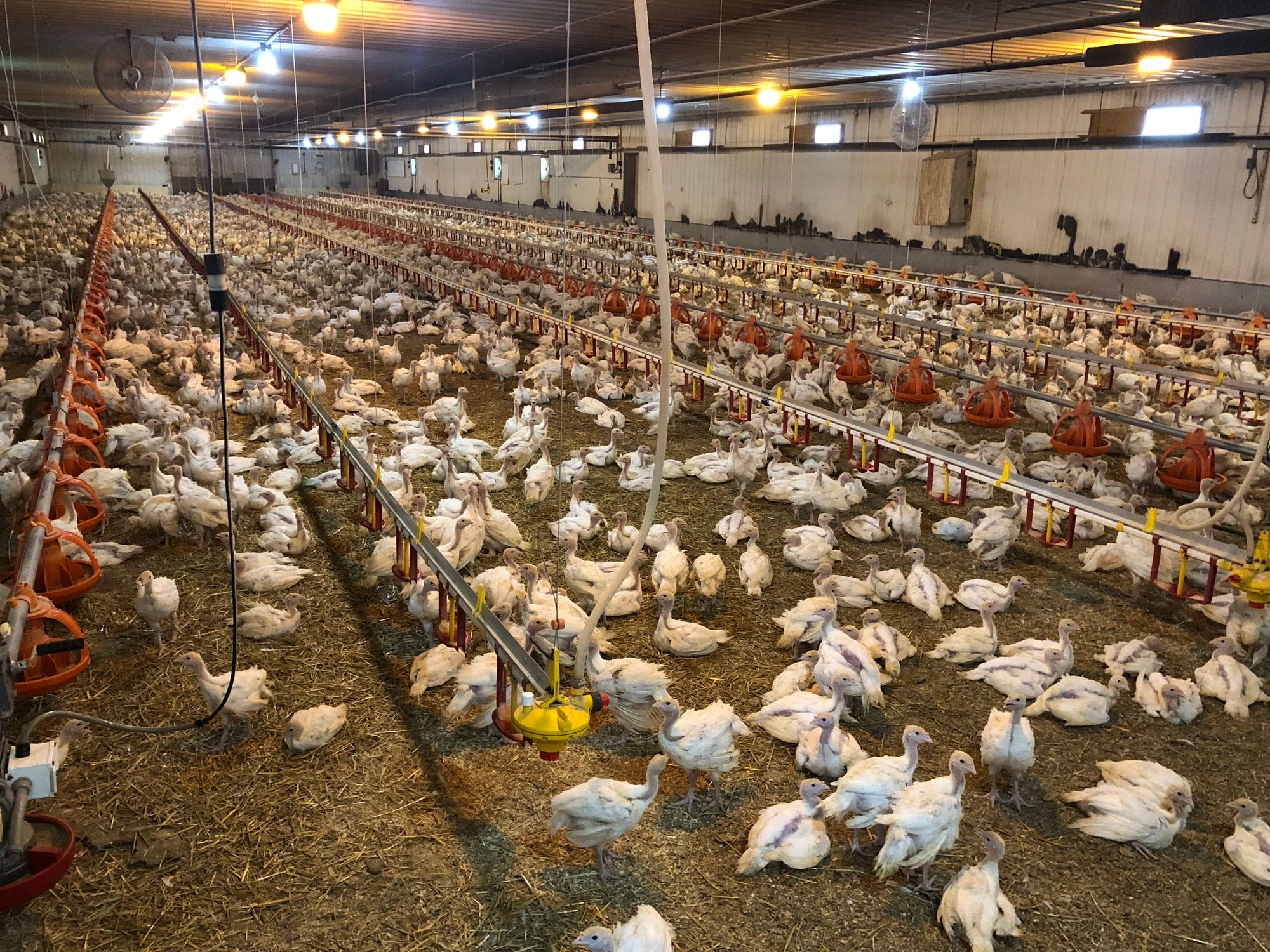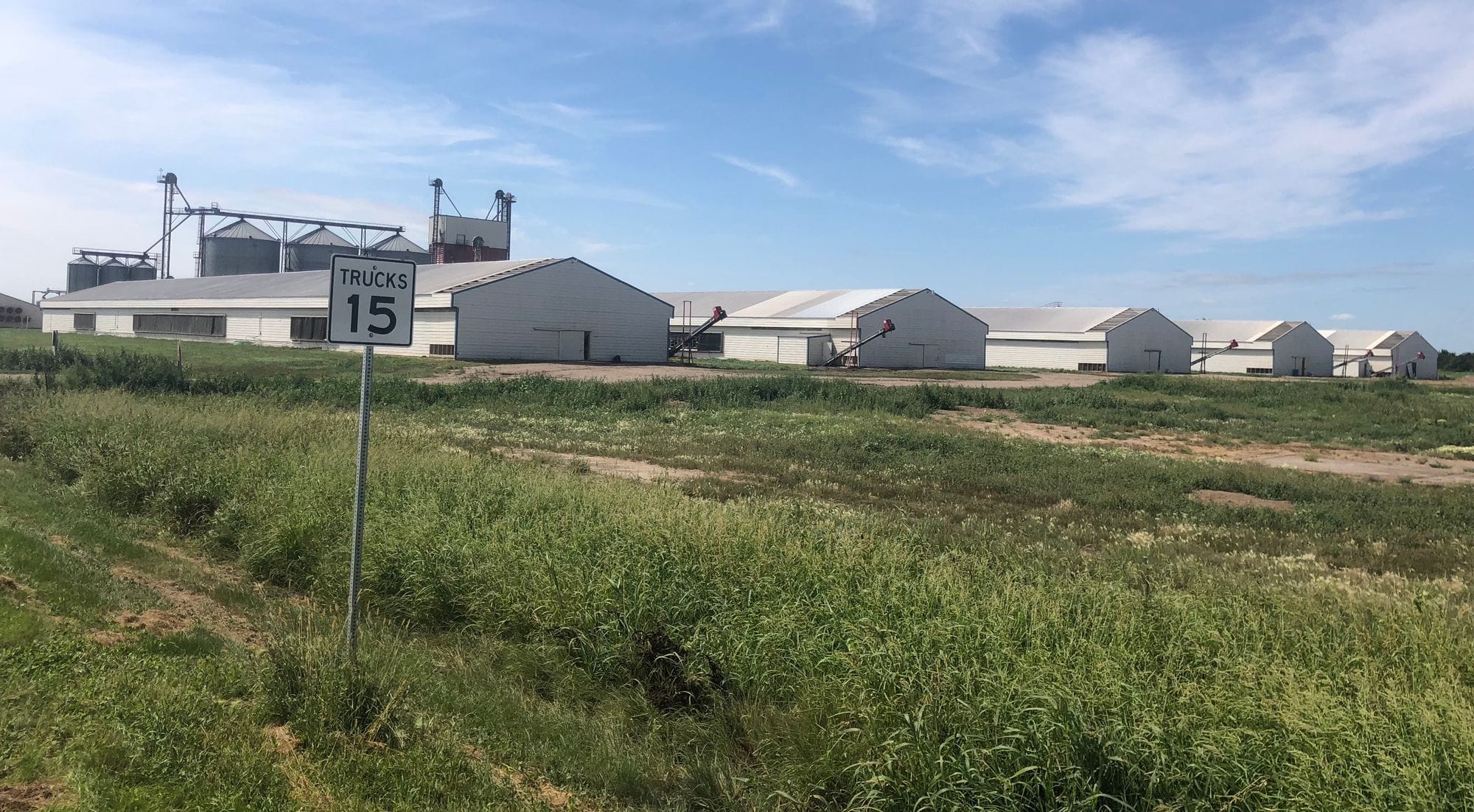Proposed legislation aimed at protecting South Dakota farmers from potential "agro-terrorism" activities could have a secondary effect of limiting access to some information about the state's largest animal feeding operations.
Senate Bill 14 seeks to strengthen a set of existing laws that make it a crime for anyone to steal farm animals, release animals, trespass on farms or interfere with farm operations.
As written, the bill also would add criminal penalties for using deception to enter or gain employment at an agricultural operation or to use cameras or other surveillance methods to spy on a farm or agricultural research facility. The bill also would make it a crime to interfere with or destroy crops or structures at farms and agricultural research facilities.

"Essentially, it's a property protection, property rights bill for farmers and ranchers," the bill's lead sponsor, Sen. Casey Crabtree (R-Madison), told News Watch.
The measure, Crabtree said, is similar to laws passed over roughly the past 15 years in Iowa that sought to prevent animal-rights activists or anyone else from entering or recording activities at farms in order to find evidence of possible animal mistreatment or abuse.
Dubbed "ag-gag" laws by opponents, the laws were challenged in court on First Amendment grounds. Despite some lower court rulings, the Iowa laws most similar to Crabtree's proposal were upheld as constitutional by a federal appeals court in 2024.

Crabtree said he hasn't heard of widespread efforts to infiltrate or interfere with South Dakota farm operations, but a mink farm in Arlington has experienced problems in the past.
Operators of that farm did not return a call seeking comment.
The intent of the bill is to stop "bad actors" from using deception or technology to possibly paint an unfair picture of what is happening on South Dakota farms, Crabtree said.
"We've got reports back about environmentalist groups that are attacking production facilities, or that they might be using drones and cameras, is really where this comes from," he said.
Ag groups push for Senate Bill 14
The drafting of SB 14 was aided by a number of farm groups that gathered last summer to identify ways to help agricultural producers in the 2025 legislative session, said Matthew Bogue, public policy director for the South Dakota Farm Bureau Federation.
South Dakota farmers deserve protection from anyone who may have "intent to cause physical or economic harm" to a farmer or farm operation, he said.
State farm groups have heard concerns from producers that people could break into their farms or trespass with ill intent, Bogue said.
"It’s never a bad time to be proactive," he said. "In our opinion, this modernizes the existing statutes."
Bill would limit information on CAFOs
But the bill also would add a new section to state law that would make it more difficult for the public, the press and even local governments from obtaining information about the state's largest animal operations.
Concentrated animal feeding operations, or CAFOs, are large livestock operations where several hundred or even tens of thousands of cattle, hogs, chickens and turkeys are fed within a single farm, often in enclosed structures.
CAFOs are heavily regulated in South Dakota, and operators must obtain a permit and undergo inspection of their operations and their records to ensure proper waste management and protection of water resources.

Section 6 in SB 14 would bar the state Department of Agriculture and Natural Resources – which oversees CAFO permitting and inspection – from releasing a list of permitted CAFOs and their locations in South Dakota to anyone unless required by federal law.
The bill also would provide DANR discretion on whether to release a list of CAFOs to any "South Dakota state agency or local government for information regarding a permitted operation in the jurisdiction of the agency or local government."
Information could be obtained in person
Crabtree said an individual or government entity could still obtain a list of CAFOs and their locations by making an in-person request at the offices of DANR in Pierre.
The restriction on obtaining information about CAFOs worries Jay Gilbertson, manager of the East Dakota Water Development District, which promotes conservation and management of water resources in eastern South Dakota.

The reason CAFOs are permitted in the first place is to maintain oversight of their operations and to allow for the state and others to ensure the large farms are not polluting the land and water, he said.
Restricting public access to CAFO permits could make it more likely that large livestock operators would cut corners or avoid expensive waste management or water protection systems without anyone knowing, Gilbertson said.
"The permits are pretty explicit and contain all sorts of things 'thou shall or shan’t do,' which makes it easy to adhere to because the operator knows exactly what is expected," he said.
"At the same time, if I’m somebody who is concerned about a facility, I can look at the permit requirements and it will tell me, 'This is exactly what is supposed to be going on.' And if it is, fine. But if it isn’t, there isn’t any debate that there’s a problem."
CAFOs expanding in South Dakota
State officials said CAFOs are generally well operated and follow state laws. But problems do occur and fines have been levied against permit violators.
According to prior research by News Watch, permitted CAFOs in South Dakota violated state regulations 217 times from October 2009 to August 2019. The state received, on average, about two complaints about CAFOS from the public each month, and animal wastes from CAFOs leaked into state waterways on nine occasions during that time period, according to state records.

The number of animals raised and fed in CAFOs has increased steadily over the past decade.
The state and lawmakers have taken steps in recent years to make it easier for development of CAFOs and harder for residents and local governments to fight them. The state also has offered financial incentives to livestock producers to expedite development of new CAFO operations.
Brian Walsh, deputy secretary of DANR, wrote in an email to News Watch that the department already denies release of CAFO information to some who request it.
"DANR reviews and considers each individual request for information on Concentrated Animal Feeding Operations (CAFOs) as they are submitted. DANR has received requests for an aggregated listing of all CAFOs including specific location information (addresses, geographic coordinate systems locations, or legal locations) with the express purpose of sharing those locations online," Walsh wrote. "DANR has denied such requests in the past due to the issue of biosecurity and agro-terrorism risks. The bill as drafted would not change how DANR currently responds to requests for CAFO records requests."
But Gilbertson said it seems odd that language in the bill could prevent the public or local governments from knowing where CAFOs are located.
"The department (DANR) has the tools to allow people to look things up for all the permits they issue," he said. "But when it comes to animal feeding operations, if you really want to know, you have to go to Pierre, and try to get in the DANR building and dig through the paper files? That would just be silly."
This story was produced by South Dakota News Watch, an independent, nonprofit organization. Read more stories and donate at sdnewswatch.org and sign up for an email to get stories when they're published. Contact Bart Pfankuch at bart.pfankuch@sdnewswatch.org.






